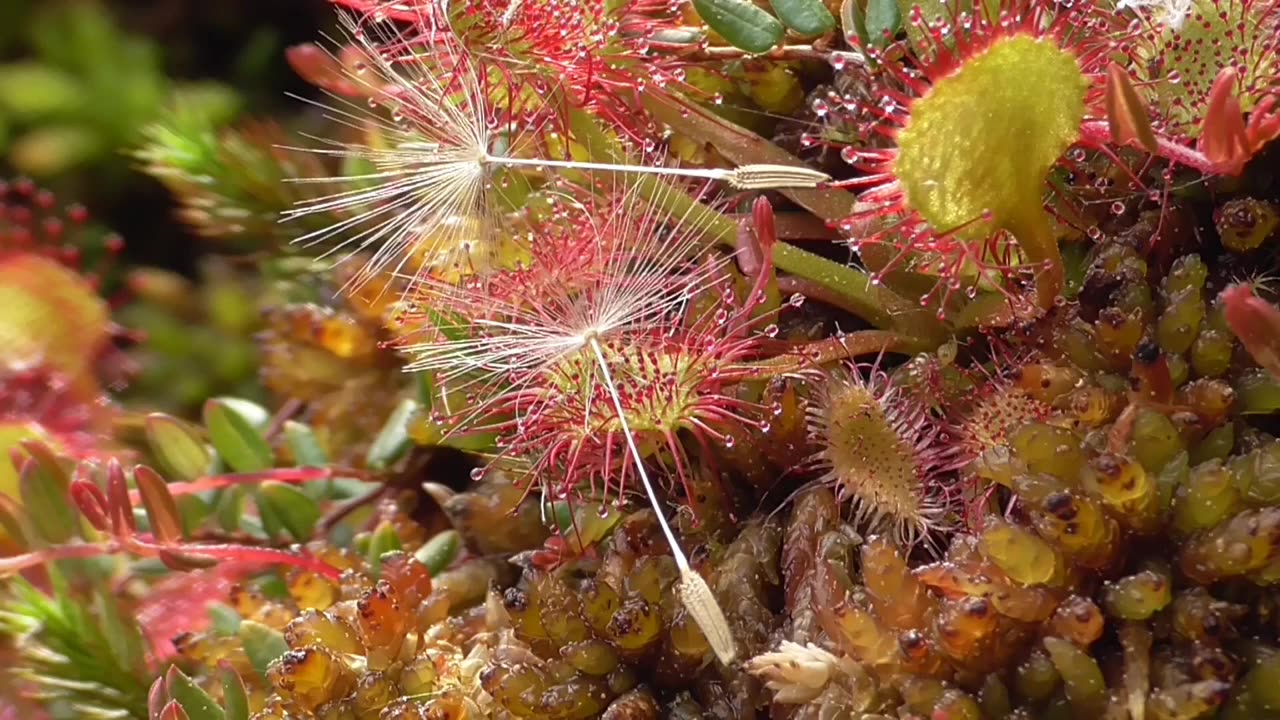Premium Only Content

Round-leaved Sundew Catches Fies
Occurred on May 22, 2016 / Eifel, Germany
Info from Licensor: "The Round-leaved Sundew at Work
I am Lothar Lenz, a nature photographer with heart and soul, and I am lucky enough to live in a small cul-de-sac village in the Eifel - surrounded by fields, forests and stream valleys, just a stone's throw from the Moselle valley. Here I can experience nature in all its diversity and observe some of the most fascinating animals right on my doorstep: Black storks, wildcats and eagle owls are my permanent neighbors. In summer, my garden is full of hornets and wasps, which I capture with my camera, whether in impressive close-ups or exciting video sequences. This closeness to nature inspires me every day and drives me to capture the beauty and uniqueness of our environment in my photographs. My desire is to inspire and motivate others to get involved in protecting this wonderful world - be it in distant regions or right on their own doorstep.
I observed and filmed how flies landed on the sticky, round leaves of the Round-leaved Sundew (Drosera rotundifolia) and became trapped in its adhesive mechanisms. This behavior is a fascinating example of the adaptations of carnivorous plants to nutrient-poor soils.
The scene begins with flies approaching the shimmering, red-green leaves of the sundew. The leaves are covered in glistening droplets on tentacle-like structures, which resemble dew and likely attract insects through their shine and possibly a sweet scent. Once the flies land, they touch the sticky droplets with their legs and bodies. Initially, this contact seems manageable for the flies, but with each movement they make to free themselves, they come into contact with more tentacles and adhesive droplets.
Within a short time, the flies' movements become increasingly restricted. The tentacles begin to slowly bend toward the trapped prey, a process that is particularly striking in slow motion. This process can take several minutes to hours, depending on the size and strength of the insect. Eventually, the fly becomes completely immobilized, stuck motionless on the leaf.
In the hours following the capture, the sundew secretes digestive enzymes that break down the fly. The plant absorbs the released nutrients, particularly nitrogen and phosphorus, through its leaves. This process is a remarkable adaptation to the nutrient-poor environments where the Round-leaved Sundew thrives.
The filmed behavior vividly demonstrates the efficiency and elegance of this carnivorous plant. It highlights how plants have developed active strategies to survive in extreme habitats, capturing and digesting animal prey to meet their nutritional needs."
-
 LIVE
LIVE
Caleb Hammer
18 hours agoHe Just Sucks… | Financial Audit
62 watching -
 LIVE
LIVE
MYLUNCHBREAK CHANNEL PAGE
1 hour agoThe Population Was ZERO
322 watching -
 LIVE
LIVE
Wendy Bell Radio
6 hours agoTrump Cracks The Barrel
7,624 watching -
 LIVE
LIVE
The Big Mig™
2 hours ago2020 Election Fraud Burn Bags Discovered
5,149 watching -
 LIVE
LIVE
Law&Crime
2 hours agoLIVE: Adelson Matriarch Murder Trial — FL v. Donna Adelson — Day 4
135 watching -
 LIVE
LIVE
Badlands Media
10 hours agoBadlands Daily: August 27, 2025
3,645 watching -
 LIVE
LIVE
The State of Freedom
4 hours agoFLF: #15 Obedience to God Unlocks Mysteries & Brings Adventure w/ Dave Hayes
60 watching -
 1:03:42
1:03:42
Crypto Power Hour
3 hours agoWhat Coins Are The Backbone of The New Digital Revolution?
6.36K6 -
 1:22:55
1:22:55
Game On!
19 hours ago $2.62 earnedBREAKING NFL NEWS: Taylor Swift and Travis Kelce Are Engaged!
39.3K13 -
 41:04
41:04
Coin Stories with Natalie Brunell
1 day agoCooking, Culture & Crypto: Norma Chu’s Food Empire Turns Bitcoin Treasury
35.4K